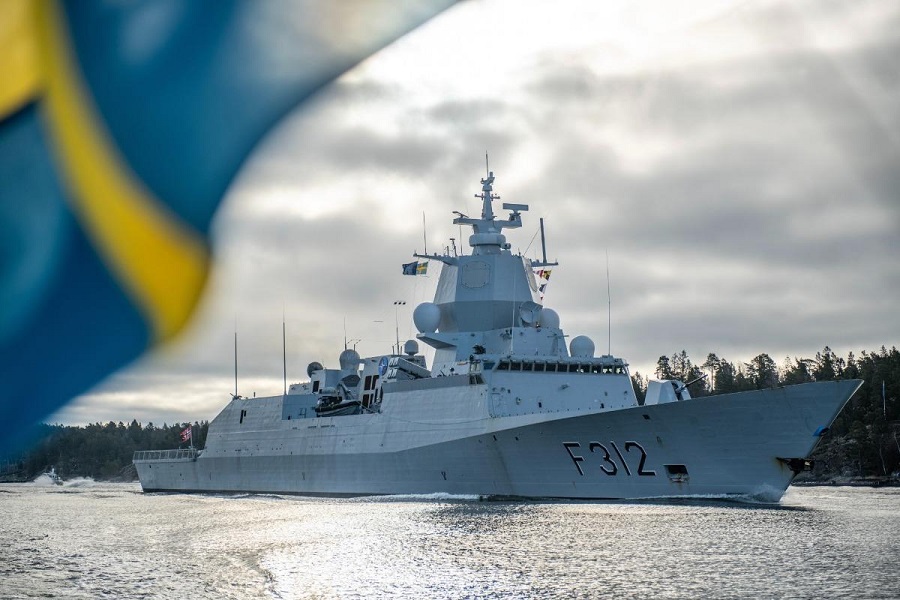Introduction
Over the last decade, navies have been pulled between two extremes. At one end are “midget” submarines—useful instruments for inserting special forces, laying a few mines, and conducting close-shore reconnaissance. Yet midgets suffer hard limits in command and control, communications, sensing, crew endurance, and payload. At the other end sit large, air-independent-propulsion (AIP) capable conventional submarines in the 1,500–2,500-ton class and beyond—magnificent blue-water patrol assets designed for long endurance and wide-area maritime awareness.
Between these poles a new class has emerged: compact submarines in the ~200–500-ton range. Properly designed, they combine the low signature and agility of a midget with the mission-system depth, sensors, weapons, and autonomy of a much larger boat. This article explains why compact submarines are not a curiosity but the rational answer to modern littoral warfare—especially in the Baltic and the North Sea—and uses the DRASS DGK as a concrete case study of what this class can deliver.
The littoral problem – put plainly
Shallow, noisy seas compress a submarine’s manoeuvre space and saturate its acoustic environment. Depths under 100 metres, complex bathymetry, strong stratification, coastal reverberation, high biologic and anthropogenic noise, and dense surface traffic all erode the traditional advantages of a large conventional submarine. In such waters, a 2,000–2,500-ton platform resembles, operationally, a whale confined to a swimming pool: limited in movement, easy to detect, and with almost no escape geometry once localised.
By contrast, a compact hull can hug the seabed, exploit bottom and surface clutter, and change depth and aspect quickly with minimal hydrodynamic signature. In precisely the waters where big hulls are least comfortable and most conspicuous, a compact submarine is at home.
Defining the compact class (and what it is not)
A compact submarine is not a “stretched midget” nor a “shrunk SSK.” It is an architecture that starts with signature and manoeuvre as primary constraints and then fits a full-fidelity combat system, a modern sonar suite, resilient C3, meaningful endurance, and a credible loadout. It accepts a smaller number of weapons in exchange for markedly higher survivability and tactical mobility.
The payoff: one platform that conducts both “midget-type” tasks—SOF insertion/extraction, covert mining, ISR—better than a midget (because it is backed by a real combat system and a complete, advanced sensor suite), and “SSK-type” tasks—sea denial against surface combatants and submarines, choke-point surveillance, covert patrols, barrier operations—better than a large SSK in the littoral (because it is far more stealthy, quiet, and difficult to detect), with a higher probability of survival in contested shallows.
The DGK, in brief
The DRASS DGK exemplifies this design philosophy. Displacing ~270 tons submerged, 34.5 metres in length and 3.4 metres in diameter, it is crewed by nine and designed for missions of up to 40 days. The baseline loadout includes four heavy torpedoes and six mines. A modular payload bay supports special forces swimmer delivery vehicles (e.g., DRASS DS8), uncrewed underwater vehicles (UUVs), ROVs/drones, and racks for mini-torpedoes or additional mines. Crucially, the DGK integrates a modern combat management system and a complete sensor/communications suite on par with much larger submarines, not the minimalist fit typical of midgets.

Why size rules – stealth, target strength, radiated noise
Stealth is a stack, not a single feature. A compact boat benefits from three fundamental physics advantages:
- Low Target Strength (TS). A smaller reflective surface and reduced volume create a harder-to-see target for active sonars—shipborne or airborne—especially amid bottom and surface reverberation in the shallows.
- Lower Self-Noise. Fewer and smaller rotating machines, lower hotel loads, and lower propulsive power yield less machinery and hydrodynamic noise. A smaller-diameter propulsor, properly designed, delays cavitation onset.
- Crew Factor. A smaller crew reduces life-support loads, acoustic housekeeping, and internal machinery footprint.
These advantages translate directly into tactics. In sub-versus-sub encounters—where first detection buys first shot—low TS and low noise are decisive. In shallow water, the ability to run slow and quiet along the bottom, to “vanish” in seabed clutter or surface noise, and to open bearing without telegraphing manoeuvre is the difference between predator and quarry.
“Only four torpedoes?”
A familiar claim—often from blue-water habits of mind—is that larger SSKs carry 12–14 torpedoes while a compact boat may carry “only” four. In the real littoral, this is the wrong metric.

After the first attack, the battlespace flips. Surface forces disperse, and the ASW complex descends—ships, helicopters, aircraft, dipping sonars, active buoys, lightweight torpedoes. The attacker’s mission for the next hours or days is evasion and survival, not re-attack.

Bottom line: a compact boat with four torpedoes carries enough to fight the engagement it will actually have in the littoral—and then to disappear.
“But big SSKs can launch missiles”
Yes—and in confined seas against any competent opponent, that is usually a self-defeating flourish.
- A missile breach of the surface is conspicuous; it localises the firing submarine and invites concentrated airborne and surface ASW into the launch box.
- Modern warships field layered soft- and hard-kill defences; single or dual anti-ship missiles have modest probability of leak-through unless launched in saturation—something a submarine cannot practically do.
- Torpedoes remain the submarine’s covert, lethal primary effect. They are hard to detect inbound, can be steered to attack from deceptive bearings, and under-keel detonations are devastating.
Fitting large missile complexes into a conventional littoral submarine consumes space and mass, enlarges the platform, and erodes the very advantage that matters most: stealth.
“Speed will save you”
It won’t. Sprinting raises indiscretion (snorting frequency), radiated noise, and detectability. You cannot outrun a helicopter, a maritime patrol aircraft, or a modern torpedo. You can only avoid being found. DGK’s design philosophy prioritises the stealth stack—acoustic discretion, low TS, precise control authority at slow speed, and energy optimised for extended quiet operations—over chasing a few knots that seldom matter tactically.
Energy choice: advanced batteries over AIP
AIP has delivered benefits for some SSKs—but at high cost in complexity, logistics, and volume. Battery innovation, driven by automotive and grid storage industries, has narrowed the indiscretion gap dramatically. DGK pursues an advanced-battery path paired with a high-efficiency propulsion train and a low hotel-load design. The result is a significantly lower indiscretion rate than earlier non-AIP conventional boats and very close to current AIP levels, without the penalties of carrying reactants and safety systems. With the next wave of higher-density, faster-charge chemistries, the compact, battery-centric approach will close the gap further—rendering expensive and complex fuel-cell AIP obsolete for most littoral missions.
Operationally, that means longer truly quiet periods, fewer and shorter snorts, and the ability to lie in wait in places ASW does not expect a submarine-sized threat.
Force-design mathematics that actually matter
Compact submarines change the numbers in three decisive ways:
- Acquisition Cost. A DGK-class submarine is on the order of one quarter of a modern large conventional boat. For the price of a single 2,000-ton SSK, a navy can field three to four compact submarines.
- Operational Availability. The DGK architecture targets ~300–310 mission days per year through simplified maintenance and the option of dual-crewing. Large conventional SSKs commonly deliver ~230–240 days. Four DGKs can generate well over a thousand submarine-days at sea annually—enough to keep three hulls continuously on station across dispersed choke points.
- Training and Sustainment. A crew of nine is faster and cheaper to recruit, train, and retain at proficiency; shore support and spares pipelines are lighter; turnaround cycles are shorter.
The combinatorial effect—more hulls, more days, more axes of approach—produces a deterrent disproportionate to cost, particularly in enclosed seas where uncertainty about “where the submarine is” shapes every adversary decision.
Employment in the Baltic and North Sea
Consider typical tasking in these theatres:
- Barrier patrols across narrows and approaches where traffic separation schemes and seabed features can be exploited.
- SOF support, launched directly from the prosecuting submarine via SDV, without a second forward-staged platform.
- Covert mine warfare to close lanes or anchorages selectively.
- Sub-versus-sub ambushes in transit “boxes” that larger SSKs must cross.
In all of these, a compact submarine’s ability to sit motionless and quiet near the bottom, snake through seabed undulations, and strike with one or two heavy torpedoes before dissolving into clutter fits the environment better than a large SSK’s raw magazine depth or range. After the first attack in 80–100 metres of water, it is the small hull that still has viable evasion geometry; the large hull, once localised, has few vertical options and very little cover.
Industrial and programme considerations
From a shipbuilding standpoint, compact submarines invite shorter build cycles and faster spiral upgrades. Smaller hulls can be block-built and outfitted efficiently; mission-system commonality with larger SSKs eases integration risk; modular payload bays let operators tailor boats for SOF, mining, or anti-surface emphasis without structural surgery. For governments, a four-hull compact squadron can be stood up faster than a single large SSK programme—and scaled as budgets and threat evolve.
DGK, as a first-in-class exemplar, underscores these advantages with a deliberately modern combat system, a complete sonar/communications fit, and a modular payload philosophy rather than a minimalist “midget-plus” approach.
Conclusion: buy the tool that fits the water
If the open ocean is the province of the large SSK, the littoral belongs to the compact submarine. The DGK demonstrates that navies no longer need to choose between a narrowly focused midget and a costly large conventional boat that is ill-at-ease in 60–100 metres of water. A compact, fully equipped submarine that is exceptionally hard to find, agile on the seabed, sufficiently armed for the engagement it will actually face, and available in numbers—this is the rational answer to Baltic and North Sea realities.
So let us state it without euphemism: in shallow and confined waters, procuring 2,000–2,500-ton SSKs is strategic malpractice. You are buying the wrong geometry for the wrong ocean. In the littoral, the winning geometry is compact, covert, and lethal. It is not the whale. It is the compact hunter you cannot quite see—and cannot safely ignore.
Editor’s note: Figures on displacement, endurance, crew, and availability reflect programme materials and the author’s analysis; they are provided for capability illustration and may be refined during final configuration.
About the Author
Rear Admiral (ret.) Liborio Francesco Palombella served nearly forty years in the Italian Navy. A career submariner, he commanded both a compact submarine (Toti class) and a conventional submarine (Sauro class). He subsequently commanded surface combatants, including an anti-submarine warfare frigate and a multi-role destroyer.
Admiral Palombella held senior operational assignments in both national and international contexts and led the Training and Evaluation Team at the Italian Navy’s Training Center. This unusually broad combination of command and staff experience—across subsurface and surface warfare, operations, training, doctrine and tactics—has given him a unique, multi-dimensional mastery of undersea warfare


























